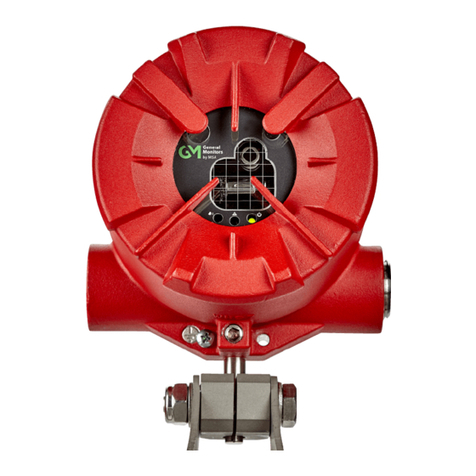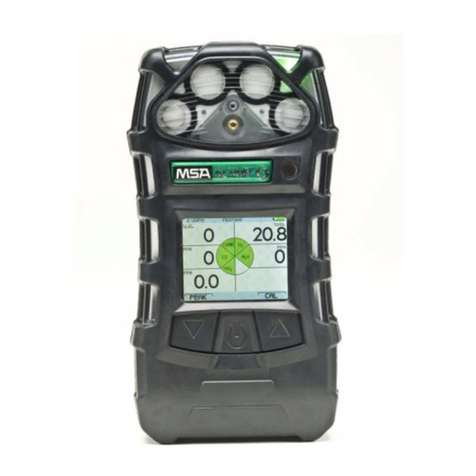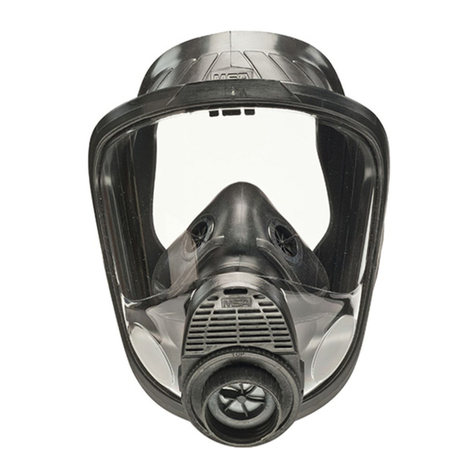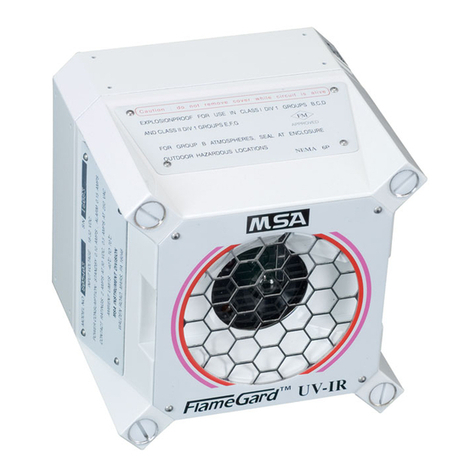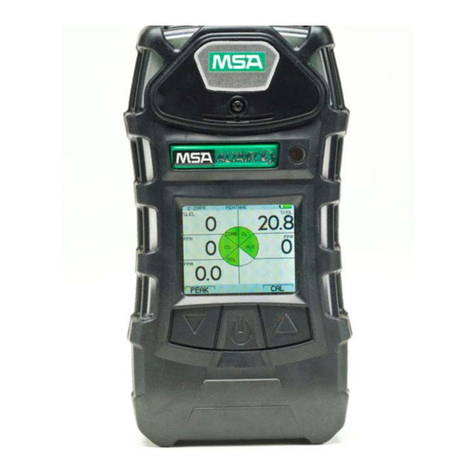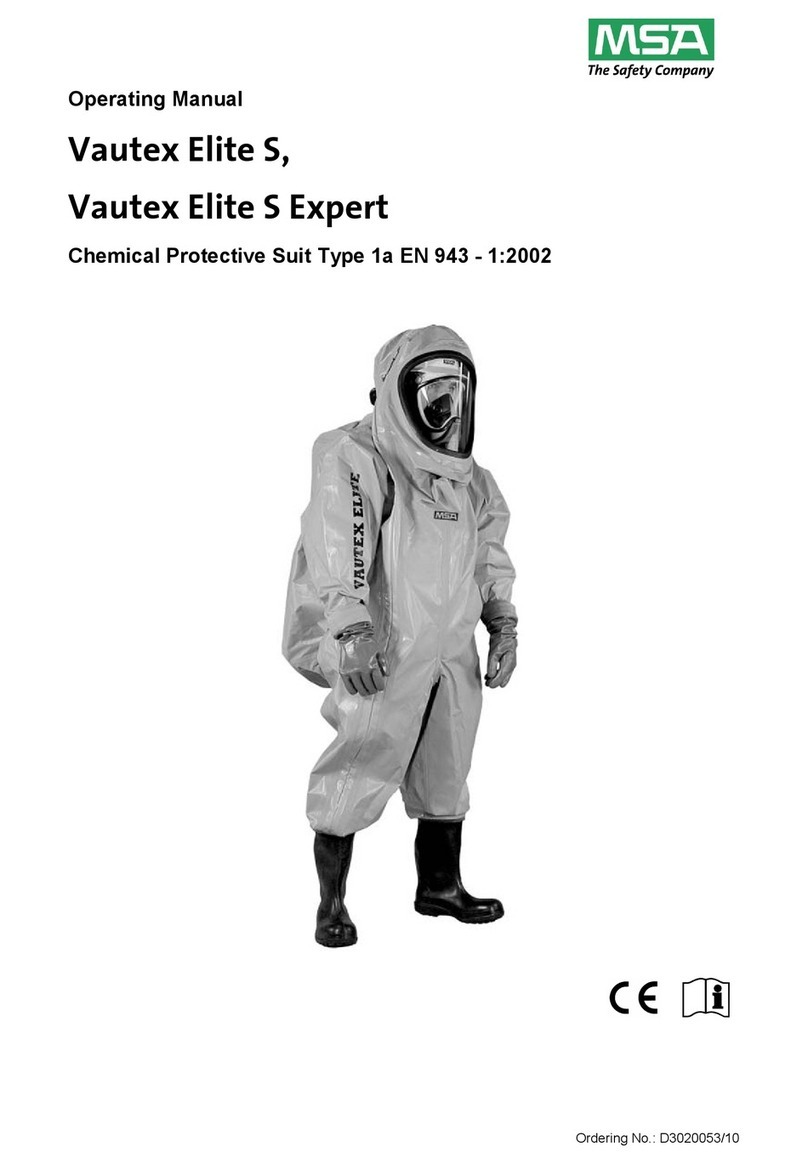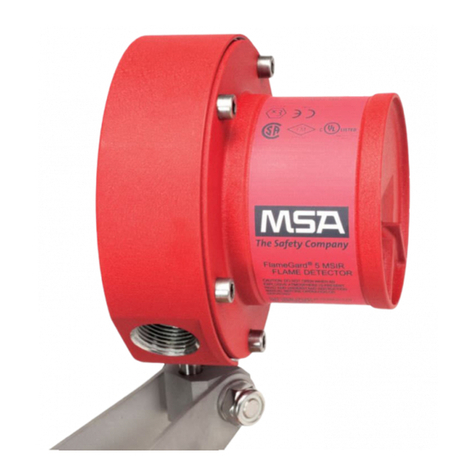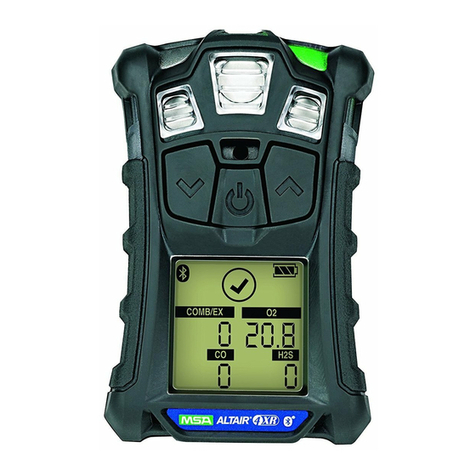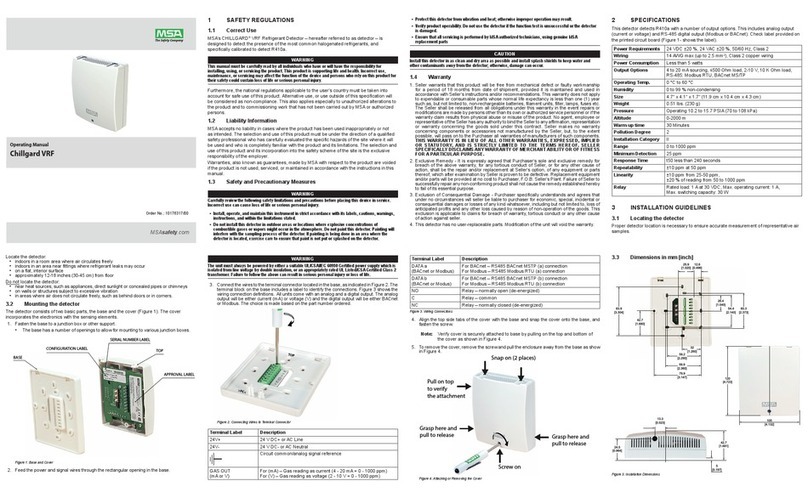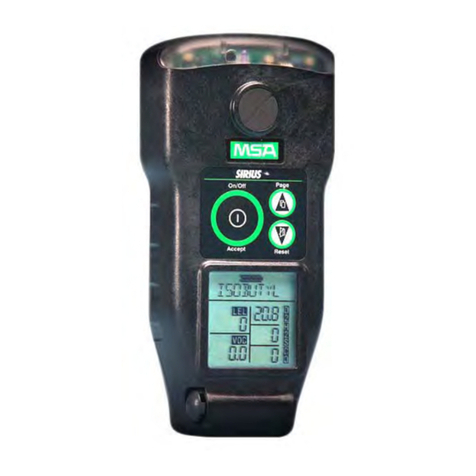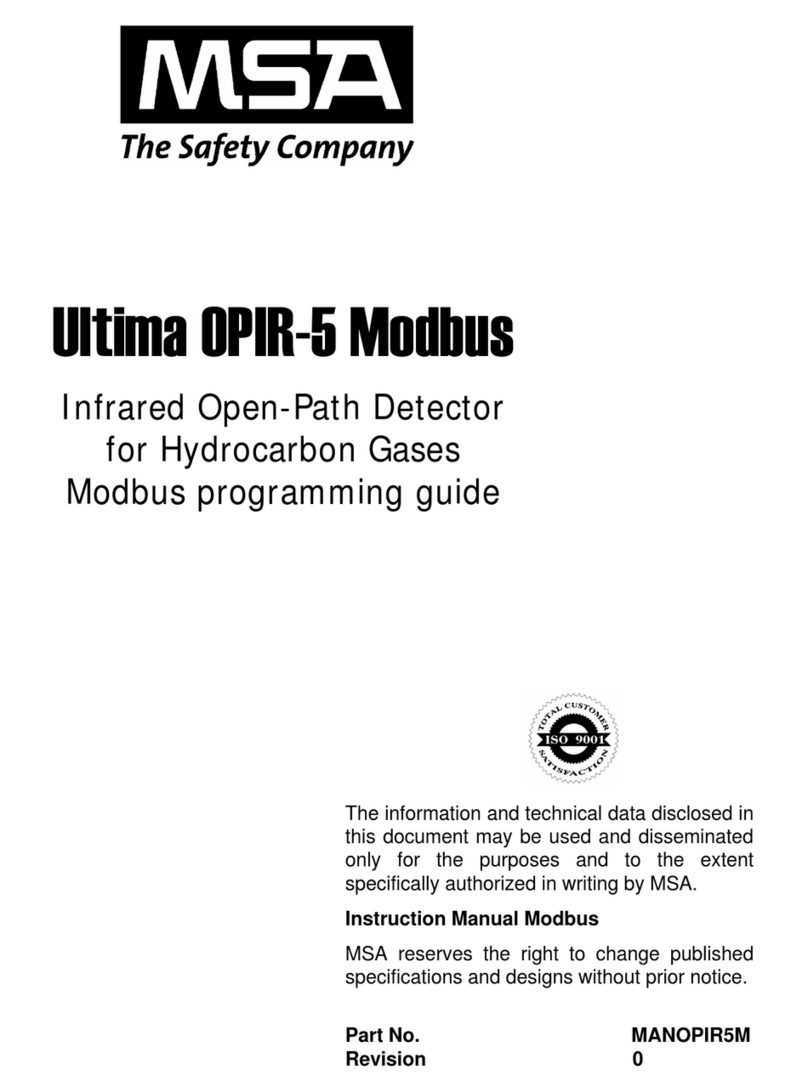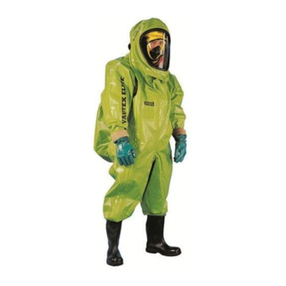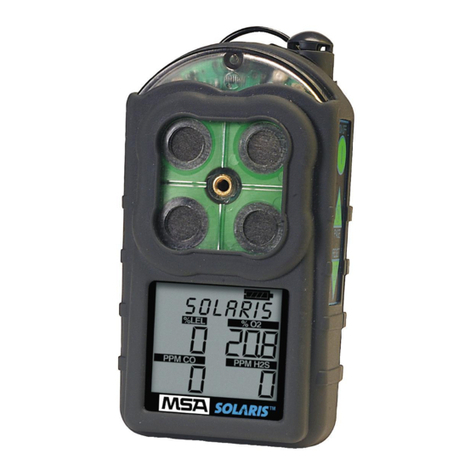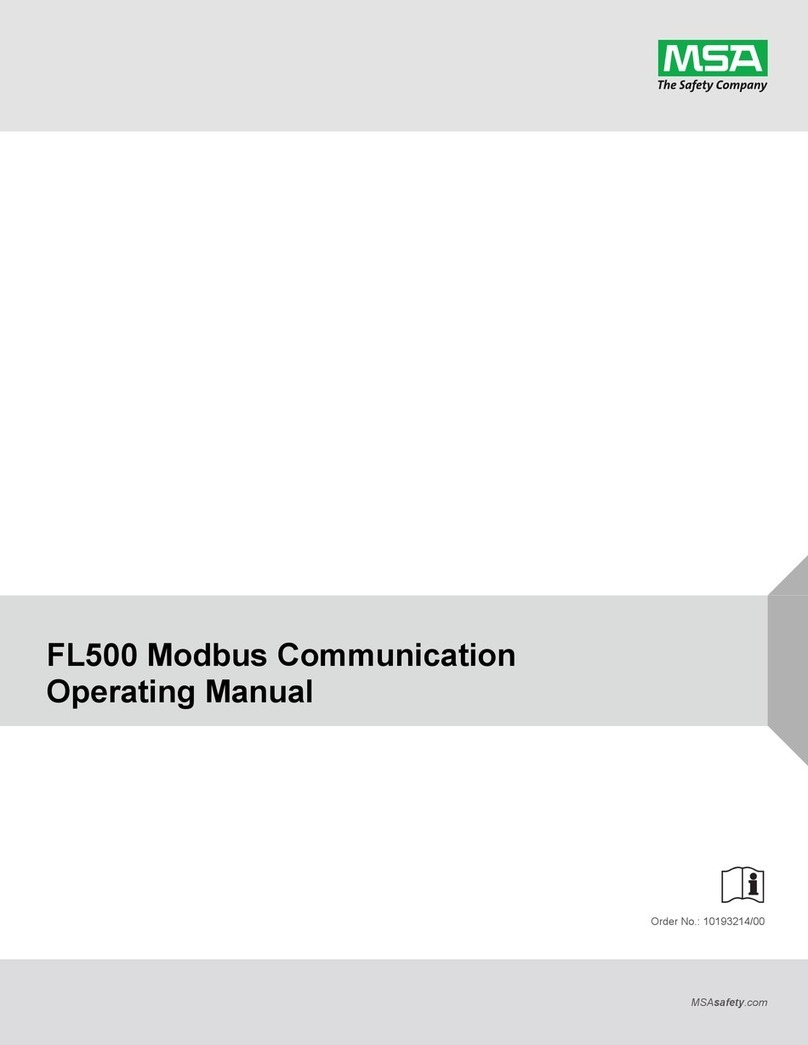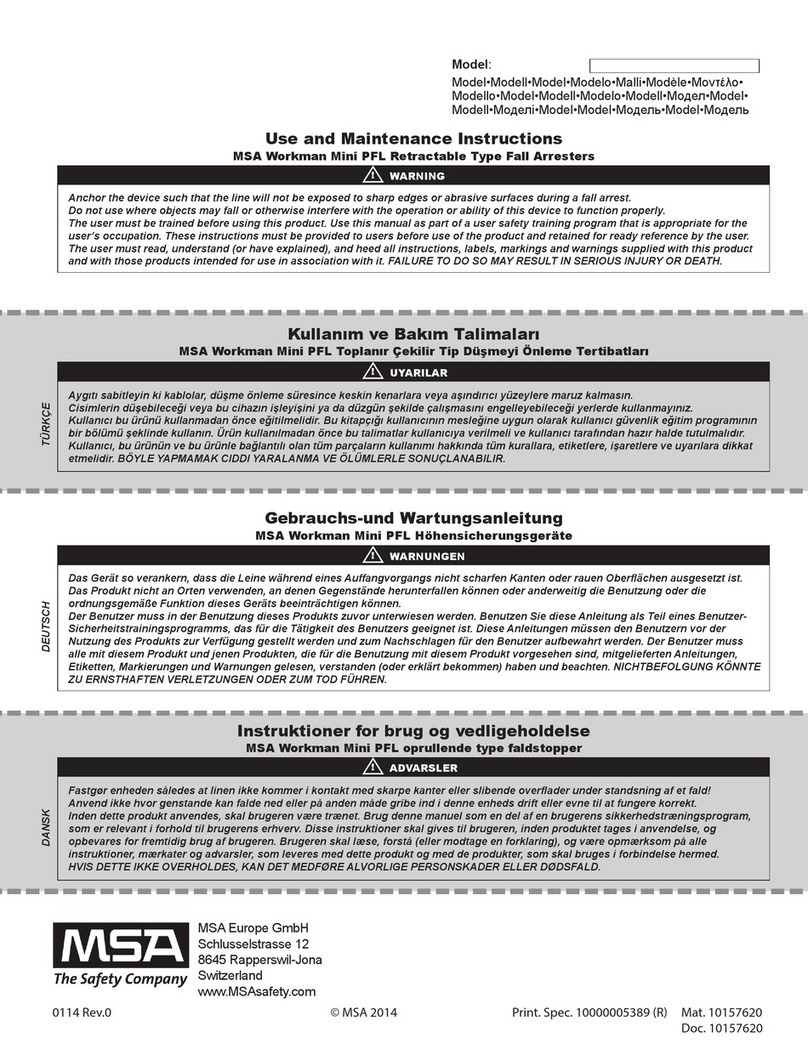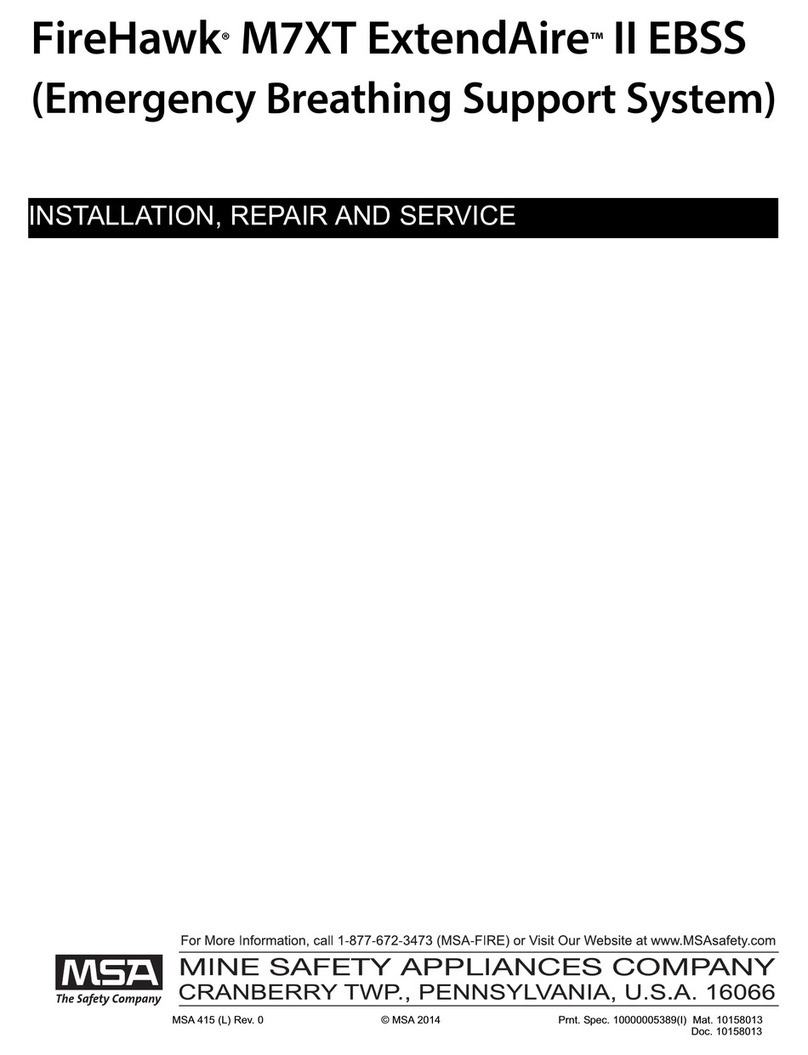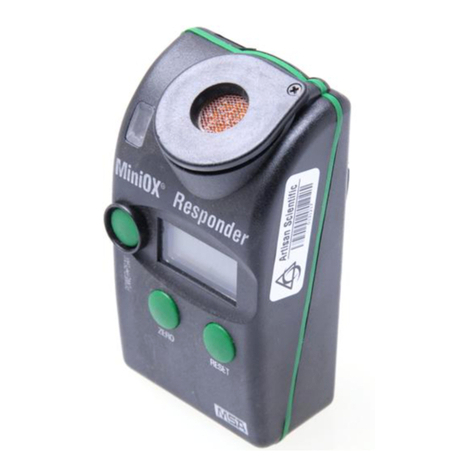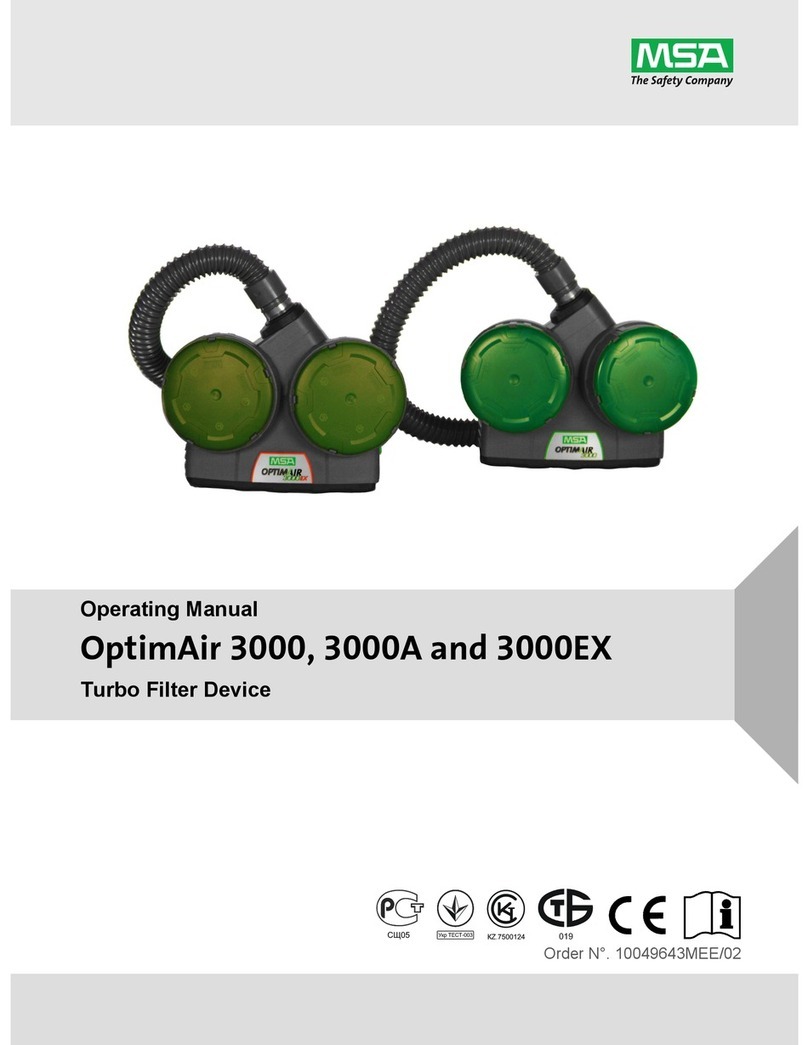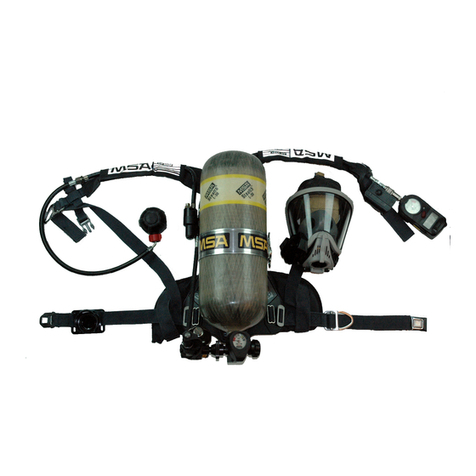
US
Safety Regulations
Suretyman Anchorage Sling
6
1.5 Warranty
1.6 Training
Purchasers of Suretyman Anchorage Slings must ensure that users are familiar with the User Instruc-
tions and are trained by a competent person in:
• workplace hazard identification, evaluation and control
• selection, inspection, use, storage and maintenance
• usage planning including calculation of free and total fall distance; maximum arresting force
• compatibility and selection of anchorage/anchorage connectors including connection to help
prevent accidental disengagement (rollout)
• proper lanyard/harness connection locations
• evacuation and rescue planning and implementation
• consequences of improper use
For Confined Space applications:
• See OSHA 29 CFR 1910.146 and ANSI Z117.1.
Periodically (at least annually) assess effectiveness of training and determine the need for retraining
or additional training. Contact MSA for training information.
Express Warranty – MSA warrants that the product furnished is free from mechanical defects or
faulty workmanship for a period of one (1) year from first use or eighteen (18) months from date of
shipment, whichever occurs first, provided it is maintained and used in accordance with MSA’s
instructions and/or recommendations. Replacement parts and repairs are warranted for ninety (90)
days from the date of repair of the product or sale of the replacement part, whichever occurs first.
MSA shall be released from all obligations under this warranty in the event repairs or modifications
are made by persons other than its own authorized service personnel or if the warranty claim results
from misuse of the product. No agent, employee or representative of MSA may bind MSA to any affir-
mation, representation or modification of the warranty concerning the goods sold under this contract.
MSA makes no warranty concerning components or accessories not manufactured by MSA, but will
pass on to the Purchaser all warranties of manufacturers of such components. THIS WARRANTY IS
IN LIEU OF ALL OTHER WARRANTIES, EXPRESS, IMPLIED OR STATUTORY, AND IS STRICTLY
LIMITED TO THE TERMS HEREOF. MSA SPECIFICALLY DISCLAIMS ANY WARRANTY OF
MERCHANTABILITY OR FITNESS FOR A PARTICULAR PURPOSE.
Exclusive Remedy - It is expressly agreed that the Purchaser’s sole and exclusive remedy for
breach of the above warranty, for any tortious conduct of MSA, or for any other cause of action, shall
be the repair and/or replacement, at MSA’s option, of any equipment or parts thereof, that after exam-
ination by MSA are proven to be defective. Replacement equipment and/or parts will be provided at
no cost to the Purchaser, F.O.B. Purchaser’s named place of destination. Failure of MSA to success-
fully repair any nonconforming product shall not cause the remedy established hereby to fail of its
essential purpose.
Exclusion of Consequential Damages Purchaser specifically understands and agrees that under
no circumstances will MSA be liable to Purchaser for economic, special, incidental, or consequential
damages or losses of any kind whatsoever, including but not limited to, loss of anticipated profits and
any other loss caused by reason of the non-operation of the goods. This exclusion is applicable to
claims for breach of warranty, tortious conduct or any other cause of action against MSA.
For additional information please contact the Customer Service Department at 1-800-MSA-2222
(1-800-672-2222).
